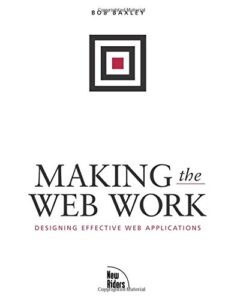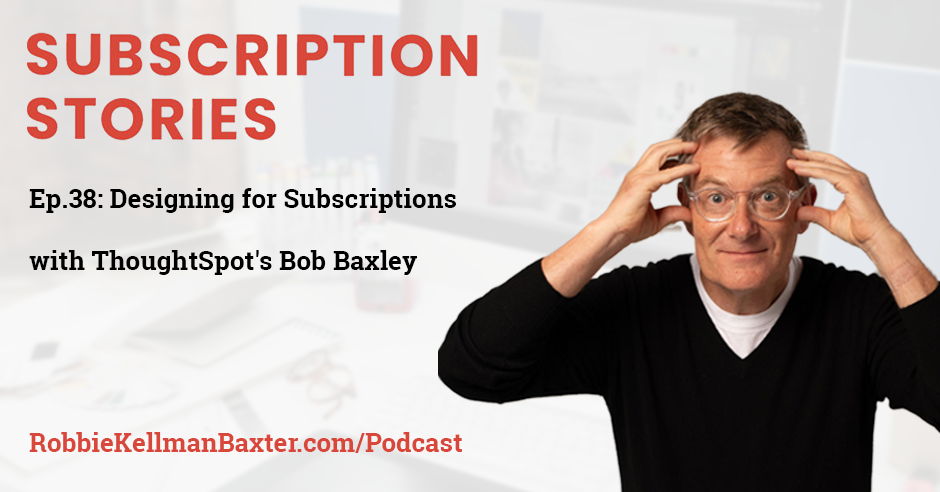
Design is such an important if sometimes overlooked element of the best subscriptions.
Today’s guest, Bob Baxley, is a thinking person’s designer, with the book and teaching credentials to prove it. He’s also an experienced practitioner, who has been “in the trenches” of software design at a wide range of organizations including Apple, Yahoo!, Pinterest, and now ThoughtSpot, where he’s SVP of Design.
Many companies don’t think through the member journey (what brings them the first time, and more importantly what keeps bringing them back). And yet, it’s critical to go beyond those headline benefits that drive acquisition and invest in engagement and retention benefits as well.
Today we’re going to talk about how to rethink product design when the subscriber can cancel at anytime, and the product has to market itself.
—
Listen to the podcast here:
Designing for Subscriptions with ThoughtSpot’s Bob Baxley
I have known Bob Baxley for a long time as a colleague, advisor and friend. I invited him to join me on the show because I want to explore why design is such an important, if sometimes overlooked, element of the best subscriptions. Bob is a thinking person’s designer with the book and the teaching credentials to prove it. He is also an experienced practitioner who has been in the trenches of software design at a wide range of organizations, including Apple, Yahoo!, Pinterest and ThoughtSpot, where he is the SVP of Design.
Many companies do not think through the member journey, what brings subscribers in the first time and more importantly, what keeps bringing them back, yet it is critical to go beyond the headline benefits that drive acquisitions and invest in engagement and retention benefits as well. We are going to talk about how to rethink product design when the customer can cancel at any time and the product has to market itself.
—
Welcome to the show, Bob.
Robbie, thanks for having me. It is great to be here. It is a real privilege to get to hang out with you and share some ideas and insights from my career in design.
I am so excited to have you. I thought we could start with a little bit of background about what drew you to the world of product design, especially software user experience design. What led you down this path?
I saw my first computer when I was about eleven years old. It was a Heathkit computer over at my friend Glen Wilkinson’s house. I remember vividly this was in 1976. I fell in love with computing from that very day, and I do not know where that came from. I was off to the races. I suppose I should have gotten into software engineering, but my parents did not think that was a great career path for some strange reason.
I graduated high school in 1981. I went to the University of Texas. I ended up studying film because I thought I wanted to make movies. While I was there, I also decided to get a second degree. I got a second one in liberal arts and history in particular. After undergrad, I went and studied music for a little bit. Around that time, I got a Mac which was so exciting, new and different. I randomly, fortuitously bumped into a guy who was a budding graphic designer. We ended up starting a desktop publishing company together back in the day when you still call it desktop publishing.
From 1987 to 1988, I was doing low-end graphic design, but I was learning about its tenets. I was also intensely using software to the point that it became like a video game. Through that experience, I developed a real sense of how software is constructed and how humans communicate with computers through the user interface layer. Fast forward a couple of years, I decided that I did not want to continue in the desktop publishing thing.

Software Design For Subscriptions: You have to have some way of bringing a lot of people together to create something that looks like it came from a single mind.
One day, I sat down with an issue of Macworld Magazine. I sent a resumé and a cover letter to all 107 advertisers in that particular issue. Only 2 of those 107 resumes came back. I say this to everybody out there looking for your first job, “You have got to send out a lot of resumes and cover letters.” I sent out 107 and I heard back from 2 people, one of which then fortuitously turned into a job with Claris Corporation, which was a subsidiary of Apple.
That is how I got into software design. I ended up moving to California in 1990 to become the first designer for a product called ClarisWorks. I started my career in Silicon Valley. When I started, there was not much of a field called UI design. People stumbled their way into it. It is often refugees from different professions, which is strange how most design leaders still are. Mostly when you talk to people that are leading different design teams, they are generally refugees from other fields.
It is fascinating to me that you are self-taught. It sounds like you have developed your framework and philosophy for software design. Were there mentors that were guiding you along the way? Do you feel like a lot of it was through your trial and error and experience with the products that were available at that time?
I am about as old as you can get and still say you design software on a micro-computer. There is not a generation ahead of me. I only know 2 or 3 people who are older than me at all that are still in the profession. There was not any other choice but to be self-taught. Going back to my education, I think that the intersection of filmmaking and history ended up being incredibly applicable to software design. History is the practice of entertaining multiple points of view and synthesizing an original viewpoint through them, which is a lot of understanding feedback, what you are trying to accomplish and making trade-offs.
Filmmaking is interesting because it is a hyper-collaborative, large-scale creative artifact that ultimately needs to look like it came from a single mind. That is the reality of developing software or video games, for that matter. You have to have some way of bringing a lot of people together to create something that looks like it came from a single mind. The intersection of those two things ended up serving well. Plus, the way my brain is structured, I do think in systems. I look for patterns and commonalities, which is very much an engineering mindset. That has ended up serving me well as a UI designer. I did stumble into it. I am truly lucky because I found something that my brain is particularly well-tuned to.
It is interesting to think about the impact of both history and film on your work as a designer. We worked together back in the day. You do take a very analytical and philosophical approach to your work. I was thinking about what you said about the film being created by a lot of different people, but it has to look like it came from one mind, like video games or software. I thought about video games in that context, but I have never thought about software products and utility products that we use every day as having to look like or feel like they came from one mind but having been created by many minds.
Virtually every company in tech looks at Apple and admires the design, and then they do a completely different process than what Apple does and expect to get Apple-type results. Share on XI came to realize that is how I think of software. I do not think of myself as building a utility product. I am not building a tool for business. I work in a medium and software. A lot of times, the designers would love to do better work, but the company’s management does not value design. They decide not to invest in it. When I look at major companies and their products are not what they should be, it would be easy to attack the designers, but I honestly do not think that is where it is.
It lies with the executives and the people who said, “This is good enough. Let us ship it.” I have been fortunate to work at places like Apple, Pinterest and ThoughtSpot, where we had an executive team that was willing to say, “We are not going to ship until it is good enough.” That is not the case in many companies.
Can you walk me through your experience? Let us start with Apple. What did you learn there? What did you notice about the way they valued design and what design meant for a company making that kind of product, hardware and then later software?
I should point out that I have been fortunate to work for design-driven companies and I have been very purposeful in working for design-driven companies. It is one of the benefits of being in Silicon Valley and in a profession with phenomenal demand and not enough supply. I have been fortunate enough to get to pick places I wanted to go work.
Product design is a very good field to go into. There is a real demand.
I have a whole talk about this that I started giving in 2014. In the same way that scriptwriting is the main constraint on Hollywood, design is the main constraint on tech companies. It is a profession that very few people are aware of. It pays incredibly well. I do not want to dig into the whole, “It is artistry.” It is not art. It is still a design. It is closer to architecture. There is a level of taste, which we can talk about. Applied arts is a great way to think about it.

Software Design For Subscriptions: A lot of times the designers would love to do better work but the management of the company just doesn’t value design.
Whenever I give this talk at high schools, the parents and students always freak out when I show the median income for designers because it is at or higher than engineers. They cannot believe that designers make as much or more than engineers, but they do. That is a whole other thing we could talk about. You were asking me about Apple. The history major in me always keeps my eye open for places where I feel like I am going to get to be part of or witness history.
I was at Yahoo! It was probably around 2005 or 2006. The iPod Nano was the new hot product at Apple. The phone was still a year and a half or two years away. It was clear that Apple was bouncing back, but still, they were this uncertain thing. I remember having a conversation with my wife, who is a huge Disney fan. We talked about the Nine Old Men, which were the animators who worked with Walt Disney back in the day. I got fixated on this idea of like, “What would it be like to work with Steve Jobs?” To work in an organization where he was running the show, I felt that that would be historic. I knew that if I went to Apple, I would learn a lot about design and get much better as a designer.
I was fortunate to get to lead the team that worked on the online store. I was super lucky. I got to present to Steve a couple of times. I got to interact with him directly and experience that. I was at the company in one of the periods of business history anywhere in the world. Being at Apple from 2006 until about 2014, I joined about six months before the phone came out and I left around the time that iPhone 6 was released. It was that amazing trajectory. It was phenomenal.
What does it mean to be a designer at Apple from a design perspective? What was your job there? What kinds of questions were you thinking about in that role?
It was very taste, judgment and opinion-driven. I do not mean a random opinion. You still have to justify it with taste and the company had a phenomenal taste. The executive staff at Apple have incredible taste in software. That is why so many of the products that come out of there are what they are. I do not think people understand the level of editing and filtering that happens as you go through the director, VP, SVP and CEO ranks.
I led a tiny team that worked on the online store. The online store, even then, was doing billions of dollars in revenue. There were only six of us that were designing the store. Any other company would have an army of designers working on it. We did not do all the marketing touts. We did the infrastructure in the store, how the store was structured, what the information architecture was, what the tabs looked like, how you navigated the store, how you would select different product variants, sizes and colors, add things to the cart, checkout and online self-service. There is all that stuff.
We recognize that people have tastes in music and art. You can have tastes in software as well. Share on XFrankly, at that time, we did not have a traditional product management organization that was telling us what to do and giving us requirements. For example, when we did the Apple Store app, the first iPhone app for the online store and retail, the entire requirement was the woman who ran the online store at that time pulled me aside on a Friday and said, “You need to start working on an app.” I was like, “Is there more to it than that?” She was like, “No, I do not want to be here in six months and not have an app.” I was like, “We will get started then.” We did.
I went home over the weekend and started looking at the apps. I realized that all great apps had five items in the bottom part of the app. It is what we call the tray. It is those five icons at the bottom of an iPhone app. I looked at a bunch of apps and I was like, “They are almost all nouns.” We have five nouns. If we can figure out what those five nouns are, that will form the basis of the product and we can start building on top of that. That is exactly what we did.
What were the five nouns?
They have changed. If I can remember them, I believe it was featured, products, stores, cart and search. If you look at a lot of Apple apps, you will still see them. It is mostly nouns along with the tray. That is a fundamental information architecture challenge. That one was complicated because it was trying to bring together the online store and Apple retail. Trying to get those two organizations to come together and agree was a little tricky.
It was a simple solution. I brainstormed on my own, “What are all the nouns that we could have?” There were only about ten of them. I called a meeting and we got the decision-makers in the room. I put five of them up on a whiteboard with magnets in a certain order. We talked for about half an hour. We tried some different ones. I moved stuff around. Within half an hour, we were like, “That is the set.” That was it. We moved on and kept going. There was no, “Let us go ask users, run some A/B tests or have a focus group.”
It was like, “That is what we are going to do.” That is what we went and did. For a lot of software companies, that feels super risky. If you are going to say it is risky, then you might as well say, “Hollywood, all novels and video games are risky.” These things involve creative choices. The way you de-risk a creative choice is you look at it over and over again and keep asking yourself, “Is there any way I can see to make this better?”
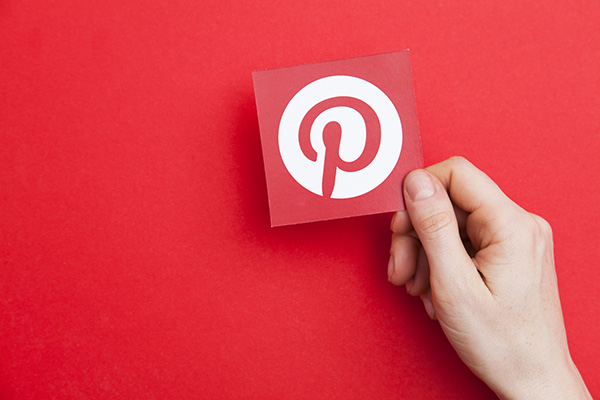
Software Design For Subscriptions: If you want to know if a company’s competing on experience, ask what you’re paying for. If you’re paying for the memory of that thing, that means you’re paying for the experience.
That is fascinating because a lot of people I have had as guests, talking about subscriptions and how to make subscription products successful, go straight to data, A/B test and “ask customers.” You are bringing up this idea of taste and pushing yourself to say, “Can I make this better?” It is a very different approach from what I have heard other people talk about. It is interesting to me that you are thinking this way and I know the quality of the output of the companies where you work. What is the disconnect between what you are talking about and the way a lot of organizations think about creating new products and services?
I put that out many times. There is a huge disconnect. If you look at Apple, virtually every company in tech looks at Apple and admires the design. They do a completely different process than what Apple does and expect to get Apple-type results. You will never get there following a metrics-based data and talk-to-customers approach. What I am advocating for is a very different philosophy. The only one proven in the real world is that it does come down to individual taste.
Taste is not a random unsupported opinion. It is the application of thinking hard about a particular medium for a long time, developing a whole big collection of reference points and understanding what is good, bad and why. We recognized that people have taste in music and art. You can have a taste in software, but you have to see it and think of it as a medium. When I talked to younger designers, I was like, “What are some of your favorite apps?” Nine times out of ten, they cannot name anything. They will name things they use a lot, but they cannot say when I ask why it is your favorite.
If I was to go talk to a young saxophone player and say, “What are some of your favorite albums?” They would rattle off 50 jazz albums and have 100 different little riffs. They could tell you what was cool about every one of them. That is a real fundamental shift in how we need to think about design. If you were to ask me some favorite things, I would not necessarily tell you a favorite app, but I could tell you a lot of interesting little touchpoints, different apps and what made them cool.
Can you give me an example of something that you think is cool that people might be familiar with?
I do not know if they are familiar with it, but you should check it out if you are not. The example I always use is an app called Habitica. It is the land of Habitica. You often hear about gamification. Gamification is the idea of taking game-type mechanisms and strapping them onto the side of an existing product. Habitica is a to-do manager and habit tracker, but instead of attaching gamification mechanisms onto those paradigms, the base app is a game. What you are trying to do is develop your character. In my case, it was Bob the Procrastinate. I can choose between being a healer, mage and warrior.
If all you’re doing is following the competition, you’re going to fail. Share on XTo keep my character healthy day after day, acquire gold, and hatch eggs, which got you all these mythical creatures, I had to keep up with my to-do list and habits. As you get further along in the app, you can bond together with other people on the platform and form teams. You go on a quest together. If you do not get all your stuff done, then the whole team suffers. You create this accountability loop. Not everybody is going to be drawn to a video game or role-playing game model for managing their to-do lists but what is novel about it is they flipped the conceptual model around. Instead of taking a to-do manager and gamifying it, they took a game and turned it into a to-do manager.
Whoever came up with the idea for Habitica had some inspiration. It was something that was offbeat and something that other people had not done. It was not taking the five existing productivity apps and saying, “How can we improve on this? What is our segment?” They said, “What is the productivity app that I would love or that would be cool, different and exciting?”
My daughter was talking about the jobs that she loves are the ones that have a spark, playfulness and leap of faith in them. We were talking about different careers and she was saying, “I want to do something where that exists.” We were having trouble defining it, but it is what you are talking about. It is taste, creativity or craftsmanship, but there is something there that I do not know that a lot of product management organizations and design teams have the luxury of tapping into.
I do not think it is luxury. I am going to take issue with that one because if all you are doing is following the competition, you are going to fail. Any organization that cannot get comfortable with and boldly exist in a world of original thinking is as good as dead because all they are waiting to do is commoditize. As soon as they get commoditized, it is all about cutting costs and it is going to be miserable.
It goes back to when Steve Jobs came back to Apple in 1996. He surveyed the personal computer landscape. It was all Dell and Compaq at that time. It is custom-built computers. It was all about the supply chain and how you can squeeze margins down to nothing. All these companies were trying to survive on 2% to 5% profits. One of them is gone. One of them went into bankruptcy and was able to come back.
You could see where that whole business model was going. Steve, as a business person, said, “I can either do that and we are dead or I can engage in original thinking, try to do something new and compete on design. If we can compete on design, we can get 34% margins on consumer electronics.” He did and they do. It is crazy. They get 34% margins on consumer electronics.
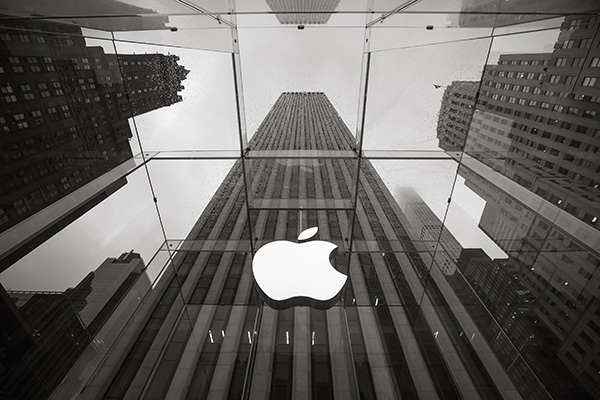
Software Design For Subscriptions: This whole distinction between an employee experience and the customer experience is completely getting obliterated because of the move to mobile inside stores.
People are committed to Apple. One of the things I talk about with Apple is that this is an example of a company that has a forever transaction with its customers without even needing subscription pricing. You do not need to lock in your customers by saying, “You have to pay every month. We have a contractual relationship.” People say and I am sure you have heard this, “I am an Apple person. I go to the Apple Store. I tell them what I need. They tell me what I should buy and I buy it. I do not worry about the cost because there is no other alternative. I am not looking at alternatives.”
Thirty-four percent margins are unheard of, but people are like, “I do not care because I am on team Apple. I am a member here. This is my thing.” I want to go on to Pinterest and then to ThoughtSpot, where you are. At Pinterest, it is a very different business model and platform. They are a platform company community. What made you go there? What were you trying to do there from a design perspective?
Partly, why did I go to Pinterest? Why did I leave Apple? For Apple, I had been there for a while. Frankly, I was tired. I was personally at that time having trouble transitioning from Apple, the underdog, to Apple, the big dog. It was time for me to take a break. I got a call and was able to meet Evan Sharp, who left Pinterest. He is one of the Cofounders of Pinterest. I met him a couple of times. The company was in some growing pains. They were trying to figure out how to scale the design team. I had learned things about design management and building teams that I thought could be useful in the company.
From a historical moment, this was in 2014. There was a very interesting scene happening in San Francisco in the South of Market area. If you look back at it, there was about a 2-square-mile area where you had Uber, Lyft, Adobe, Airbnb, Pinterest and Slack. Dropbox might have been in there and Twitter. It was the greatest concentration of design talent anywhere in the world ever, including the Renaissance in Florence. It was phenomenal. Fifty miles along Highway 1 was the greatest concentration of creative intellectual energy ever expressed in the history of mankind for about ten years. I thought it would be cool to be part of it. I was for about a year and a half and that was enough.
Pinterest is a great company. Ben Silbermann is the CEO. He is a phenomenal individual and a great leader. I was not quite as drawn to an environment where the business model was more about advertising. I felt a personal draw more to have a relationship with the user. That was important to me. I moved on from Pinterest. I took some time off and went through this discovery process of what I loved about software and tech.
That was when I probably could have moved out of the industry, which most of my colleagues had done. I rediscovered it. It turns out, for whatever reason, I like making software. It is like people making movies or something. I started looking for a job for a couple of weeks and then ThoughtSpot showed up. Bringing a consumer quality UI and user experience into enterprise software is the avant-garde of software design and ThoughtSpot was a place where I could go do that.
High quality software is how the creators of those products express the fact that they care about the person using them. Share on XCan you break down what that means to bring the consumer approach to design to enterprise software for our readers? What is going on there with the software that I use at work versus the software I use in my personal life?
Most enterprise companies are not going to invest a lot in what we might call production values, but if you look at a lot of enterprise software, it is ugly. They have a captive audience. It also turns out to go by twenty other points. There are not enough designers in the world. It is not like I sit around thinking that these enterprise companies are comfortable or desire to ship ugly and crappy software. They cannot hire enough designers because there are not enough of us in the market yet. That is going to take a while to rectify.
At a high level, a lot of enterprise software looks ugly. It also feels like products that were built and not designed. It feels like there was this requirement that came in and they often come in from big customers. Everybody is making all these random requests and then you start trying to figure out where to fit the stuff in.
Within a few years, what originally may be started as a pretty clear product vision and something simple and manageable becomes this completely, unruly, untended garden. It becomes very difficult to go and fix that in large part because you have a revenue stream built around it and somebody somewhere is attached to every little feature.
Frankly, it was a lot of what drove the paralysis around the Yahoo! homepage when I was there as well. Even though any given link on the homepage was not huge, the traffic that came into anything from those links was huge. Every time you tried to change the homepage, all the other people who depend on the homepage would seize up. It is bureaucratic bloat, sclerosis or whatever.
I was honestly surprised when you went to ThoughtSpot because you have been a consumer guy. You explained consumer products because consumers have more choice and they are being forced increasingly to differentiate on design. That would seem like the place where designers would gravitate and that is what we are seeing. It is hard for enterprise software companies to find designers and yet you chose as a challenge to go to ThoughtSpot. You think that enterprise software is the avant-garde for design. You are working on some interesting work that ties into a subscription. What is it that you are doing at ThoughtSpot? What was it that excited you about taking on that challenge?
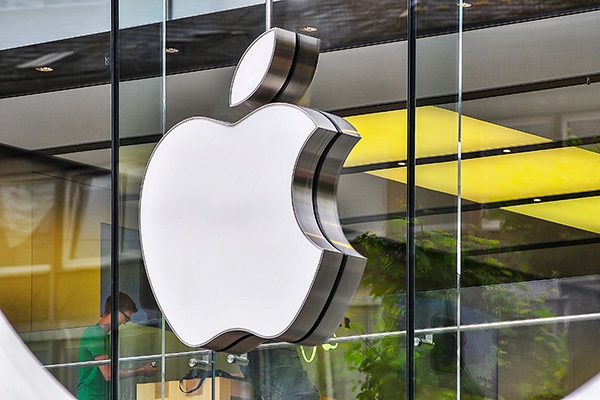
Software Design For Subscriptions: If you can’t feel somebody on the other side of the software, if you can’t feel the creator on the other side, it’s hard to have a relationship with it.
One was trying to transform an organization that was largely engineering-driven into one that was design-driven. Trying to infuse the culture with thinking more about the user and less about the customer was an interesting challenge. Trying to figure out how to get a high amount of output from a relatively small design team was an interesting challenge. We spent a lot of time talking about our design system in ways that we scaled design to be wildly more productive than it might be if we had a bunch of bodies in the seat, churning stuff out.
The user versus customer is an interesting one in B2B because the customer is the one who buys it, but the user is the one that has to log in every day and get value from it.
I drive that in conversations with the company all the time. It was one of the first things I started trying to distinguish between because the company naturally has a big sales component as well. We were always talking about, “What does the customer want?” I am like, “The customer is one person. I get that the customer is important. They are also well-represented. Do we think about our users? What are the mechanisms in design reviews? How are we looking at the product that helps us understand what the true user experience is?”
One of the big problems with all enterprise software and, frankly, all software, in general, is that it can be fragmented because many companies have tended to silo different functional areas. If you look at a lot of products, you can feel that you are being handed off from one team to the other. The classic example in eCommerce is when you go from the merchandising site into the cart and then from the cart into the checkout. You go to checkout and you are like, “Did I step through the wrong door here? I feel like I am in the basement of the restaurant all of a sudden.”
It is the challenge of trying to smooth that out. “How do we do that? What are the experiments we can run in the design process? What are the different ways we can talk about our deliverables and artifacts?” When you make this distinction of like, “I have always seen you as a consumer guy and then you are doing enterprise,” what I hear in my head is, “Bob, you have always made big-budget superhero movies and then you are making documentaries.” It is like, “I am still making movies. It is all the same. I used to record classical and then I am recording jazz.” In my head, I do not make that distinction.
That goes back to the last role I had at Apple. I was working on some of the software they used inside the stores that the specialists used. That is when I realized that this whole distinction between an employee experience and a customer-facing experience is completely obliterated because the move to mobile inside stores and other situations means that the customer can often look over the employee’s shoulder while they are doing stuff. They have a mobile-based checkout in Apple Stores and Nike Stores. Lots of other places have handheld checkout systems that they use to take your money. That is a shared experience between the customer and the employee.
How does the product market itself to the user? The product has to constantly tell the user what it is and why it's valuable. Share on XThe customer looking over your shoulder means that it is part of the experience for that customer. It has to be aligned with the overall customer experience. You are also making this point, which is important, that in some ways, the employee is like a customer in a big organization. The customer at my company buys some piece of software or some enterprise system. As a user, first of all, I am forced to use it.
If I do not use it or ignore it and continue using my spreadsheet or my notes on a piece of paper instead of using the product that my boss wants me to use, now that more and more businesses are B2B subscriptions rather than enterprise licenses, there is a chance that the company might cancel the subscription if no one is using it. As organizations move to SaaS, that user is becoming a customer or, more important. When you say customer, you are not just thinking of the buyer. You are thinking of all the people that are going to have input on how long somebody not just buys it but how long they stay.
If you go on LinkedIn, you will see many companies touting how they are one of the best places to work for. They will say, “We are a great place to work, so it means that our employees have more emotional and cognitive energy to spend time with their customers.” It is like The Container Store, for example. They take a lot of pride in their associates being happy employees because that means their associates have more energy to spend on their customers.
If you believe that, isn’t it important that the software tools that your employees are using are also high quality? Isn’t that how you, as a company, illustrate that you care about them to your staff? That is why Target or Best Buy has enormous design teams and engineering teams creating internal tools because they matter. High-quality software is how the creators of those products express the fact that they care about the person using them. You use tools all the time. You have experiences where you can feel the soul of the creator coming through. It touches you. You can feel it.
When you use high-quality, well-crafted software, you can feel the creators coming through. With the other stuff you use, you are like, “I do not feel that.” It is a real difference in the human connection. It starts to create that relationship bond that is at the heart of sustained forever transactions. All the things that you talked about all have to do with shifting to a relationship-based model. If you cannot feel the creator on the other side, it is hard to have a relationship with it.
At ThoughtSpot, you came in to become a design-centered organization and also to move the organization to support a SaaS model. Can you talk about some of the things that you changed or had to change as you move to this more user-centric, relationship-driven culture and a set of business processes in an already successful organization but wanted to move in this direction?
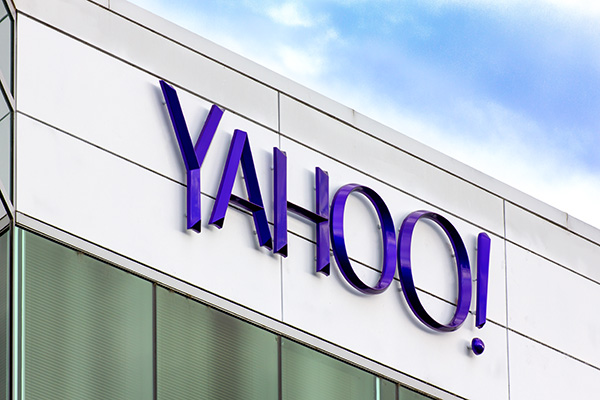
Software Design For Subscriptions: From a research perspective, there’s probably more original ideas for us to take away and learn about by looking at these adjacent experiences rather than looking at our direct competitors.
To go back to your other point about the shift when you go from a one-time purchase to a subscription model, ThoughtSpot is in the middle of moving to a SaaS model with some subscription light stuff hanging around it. We are early days in this thing. A big challenge for us is, “How does the product market itself to the user?” The product has to constantly tell the user what it is and why it is valuable.
It means you have to build these mechanisms with a product that is monitoring for any given user, “Which features have they engaged with? How are they engaging with it?” Providing notifications, learning material and emails to try to keep them going. Adobe and Asana do a great job with this. There is a lot of technology infrastructure that has to be built. It has to be built on a per-company basis to enable that. It is the secret sauce of how you get these products to keep people engaged.
In terms of making this transition from a one-time purchase to a subscription and having the product constantly prove its value, Adobe is a fantastic case study. Every eighteen months, they come out with a new version of Photoshop and every designer had to decide whether or not they were going to plunk down $450. Every designer sitting around is going, “Do I want to spend another $30 or $40 for the Adobe Suite this month?” It is because I see those charges on their credit card every month. That is different psychology. Since that time, Adobe has done stuff where they bought Behance. They built a whole huge community.
Behance is their community for designers and creators.
Shantanu, Scott Belsky and others over there have done a phenomenal job. Adobe is not about making software. It is about empowering creatives to do the best work they can. Adobe’s role in that is through their software products. It hearkens back to the founding concept of Apple, which is a belief that personal computing can have a transformative effect on the lives of individuals. Apple happens to make products to make that happen. That is a powerful idea and it is at the heart of what Adobe is doing.
What we are trying to do at ThoughtSpot is we are trying to democratize data. It is trying to put these powerful data analytics tools into the hands of individuals so that they can make better decisions in the context of their business, which helps their company and empowers them. It is a real different mindset from, “We have built this software tool and are trying to tweak it around the edges. They will look at more ads and give us another $5 a month.” That is not what we are trying to do. We are trying to help people be more successful in life. We will benefit because of that economically. Honestly, the world will benefit from that as well. That is putting good out into the world.
With ThoughtSpot moving to this user-centric model, are there elements from what you have described with Adobe or what Apple has done that you are drawing on to optimize the product to market itself the way that you have described with these other great products?
We are in relatively early days here, so I cannot talk about any specific projects. One of the things we spend a lot of time doing is instead of looking at competitive products, we try to look at adjacent products. Choosing to buy a business analytics product is a pretty big decision. It is expensive. You are committing. You have to invest some learning to figure out how to use it. We could go look at our direct competitors, but then we might fall victim to mimicry and operating in that vein.
We are doing some research where we are trying to look at what we call adjacent products. One of those would be professional SLRs. What is the process of buying an expensive digital camera? The whole process of exploring a camera and comparing them is a long-term purchase. You have to figure out how to operate the camera. There is a learning curve. What is that whole emotional journey for a user to feel like?
We are trying to see if there are things that we can learn from what Nikon or Canon has done. We are also looking at cars because a car purchase is also a big commitment. It does not necessarily have a learning curve that some other things have. From a research perspective, there are probably more original ideas to take away and learn about by looking at these adjacent experiences rather than our direct competitors.
I could talk to you all day. I want to save some time to close out with a speed round. What is the first subscription you ever had?
Your favorite subscription as a user and subscriber?
It is the Waking Up app by Sam Harris.
Your favorite subscription as a designer?
With all due respect to my friends at Adobe, Figma is the new kid on the block. They are not even that new anymore. Figma is the design tool for software design. It is being used in every organization you can name. It is phenomenal. They are doing an amazing job. I will also put in a quick pitch for a product called Pitch, which is one of the best design pieces of software I have seen in a long time. Pitch is a collaborative presentation application. It competes with Google Slides, Apple Keynote and Microsoft PowerPoint. It beats the pants off of all those. Check it out.
Best business book you have read in 2021? I know you are a huge reader.
Generally, I would say Creativity, Inc. by Ed Catmull. I finished The Infinite Game by Simon Sinek and I loved that. That changed how I think about a lot of stuff. I will go with that.
A piece of software that you are especially proud of that you had a part in creating?
There are a lot of different things in there. I was proud of the first thing I worked on. It was ClarisWorks 1.0. It came out back in 1990 or 1991. I am still proud of the menu structure I came up with. It lasted for almost twelve years. Yahoo! Answers was a phenomenal product and I was proud to be a part of that. At Apple, we redesigned every aspect of the online store. I was super proud of that store, my work, what the team did and the initial release of the Apple Store app. Those were all great. We are doing some great work at ThoughtSpot. Not everything has quite made it out yet. I am very pleased to say that I am still doing the best work of my career and I hope to keep that up for a while still.
You are a real inspiration to me in the way that you look at the world, continue to challenge yourself and learn, grow and take on new big opportunities. I am thrilled that you are here on the show. I look forward to having you back again soon.
Thanks again for the time, Robbie. It has been great to spend time with you.
—
That was product designer, Bob Baxley. Bob is the SVP Design at ThoughtSpot and the Cohost of the Re:considering Podcast. For more about Bob and ThoughtSpot, go to ThoughtSpot.com. For more about subscription stories, go to RobbieKellmanBaxter.com/podcast. If you like what you heard, please go over to Apple Podcasts or Apple iTunes and leave a review. Mention Bob and this episode if you especially enjoyed it. We read all the reviews because we want your feedback. Thanks for your support and thanks for reading.
Important Links
- Bob Baxley, SVP of Design, ThoughtSpot
- Apple
- Yahoo!
- ThoughtSpot
- University of Texas
- Macworld Magazine
- Claris Corporation
- Conditions, Constraints, and Conviction | Bob Baxley
- Habitica
- Dell
- Compaq
- Evan Sharp, Cofounder, Pinterest
- Uber
- Lyft
- Adobe
- Airbnb
- Slack
- Ben Silbermann, CEO, Pinterest
- The Container Store
- Target
- Best Buy
- Asana
- Behance
- Shantanu Narayen, CEO, Adobe
- Scott Belsky, Executive Vice President, Adobe
- Nikon
- Canon
- Waking Up
- Figma
- Pitch
- Creativity, Inc.
- The Infinite Game
- Re:considering Podcast
- Apple Podcasts – Subscription Stories: True Tales from the Trenches
- Heathkit
- Mac
- Nine Old Men
- Apple Store app
- Dropbox
- Boys’ Life Magazine
- ClarisWorks 1.0
About Bob Baxley
 Bob Baxley is a design executive who lives and works in Silicon Valley. He currently serves as the Senior Vice President of Design & Experience at ThoughtSpot, a business intelligence and data analytics platform. Prior to ThoughtSpot, Bob was Head of Product Design at Pinterest where he built, led, and managed a multifaceted design team responsible for both the consumer and business facing elements of Pinterest.
Bob Baxley is a design executive who lives and works in Silicon Valley. He currently serves as the Senior Vice President of Design & Experience at ThoughtSpot, a business intelligence and data analytics platform. Prior to ThoughtSpot, Bob was Head of Product Design at Pinterest where he built, led, and managed a multifaceted design team responsible for both the consumer and business facing elements of Pinterest.
Starting in 2006, Bob spent over eight years at Apple, where he served in senior leadership roles for Apple’s retail and e-commerce teams. As a Director of Design, Bob hired and led the creative team responsible for a broad variety of applications including the Apple Online Store, the Apple Store app, and the transactional areas of iPhoto and GarageBand.
As Director of Design for Yahoo! Search, Bob built and led the design team that created Yahoo! Answers and designed other search-centric properties. Bob’s career as a designer began at Claris Corporation where he was Lead UI Designer for the initial releases of ClarisWorks and MacProject Pro.
The author of Making the Web Work, Bob is also a sought-after public speaker sharing his experiences and observations about a range of topics related to design, technology, innovation, and the culture of Silicon Valley.
Bob holds a B.A. in History and a B.S in Radio/Television/Film from the University of Texas at Austin as well as a Master of Liberal Arts from Stanford University.
Love the show? Subscribe, rate, review, and share!
Join the Subscription Stories Community today:


